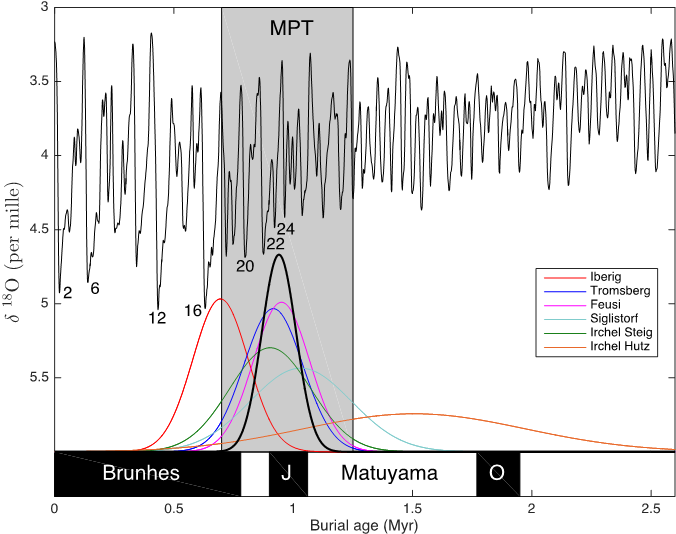New model helps solve an old problem - dating the first appearance of large glaciers in the Alps
Mads Faurschou Knudsen, Jesper Nørgaard, David Lundbek Egholm, Thomas Mejer Hansen, and international colleagues have just published a new paper in Earth and Planetary Science Letters entitled New cosmogenic nuclide burial-dating model indicates onset of major glaciations in the Alps during Middle Pleistocene Transition

The paper is called "New cosmogenic nuclide burial-dating model indicates onset of major glaciations in the Alps during Middle Pleistocene Transition" and is written by Mads Faurschou Knudsen, Jesper Nørgaard, Reto Grischott, Florian Kober, David Lundbek Egholm, Thomas Mejer Hansen and John D. Jansen.
Below you can read the abstract:
A set of four outwash terraces in the northern Alpine Foreland motivated Penck and Brückner’s classical scheme of four great Alpine ice ages: Günz, Mindel, Riss, and Würm. While it is now established that the Würm corresponds to marine isotope stages (MIS) 5d–2 (?117–14 ka) and the Riss type locality to MIS 6 (?191–130 ka), there is no consensus regarding the age of the older glaciations. The two oldest terraces, known as Höhere Deckenschotter(HDS) and Tiefere Deckenschotter(TDS) in Switzerland and neighbouringGermany, contain interbedded tills that directly indicate the first arrival of glaciers into the northern Alpine Foreland. Here, we set out to constrain the timing of the HDS, which signal the first major glaciations in the Alps. To achieve this goal, we devised a new burial-dating model tailored to glaciogenic sediments: P-PINI (Particle Pathway Inversion of Nuclide Inventories). The method applies a source-to-sink framework to a cosmogenic 10Be-26Al inversion model accounting for variable cosmic-ray exposure and non-steady erosion. Taking published 10Be-26Al data from five HDS sites (Feusi, Tromsberg, Siglistorf, Irchel Steig, and Irchel Hütz) and one TDS site (Iberig), we obtain age distributions (±1?) that are especially well constrained for Feusi (0.93 ±0.13 Ma), Iberig (0.93 ±0.17 Ma), and Tromsberg (0.88 ±0.14 Ma), less well-constrained for Irchel Steig (0.69 ±0.25 Ma) and Siglistorf (0.94 ±0.27 Ma), and very poorly constrained for Irchel Hütz (1.39 ±0.56 Ma). Consistent with the morphostratigraphy, which dictates that the TDS postdates the HDS, we implemented a Bayesian modelling framework, yielding an age of 0.69 ±0.12 Ma for Iberig (TDS) and a combined age of 0.95 ±0.07 Ma for the HDS sites. Based on the P-PINI burial ages as well as the combined, Bayesian burial age, we propose an age around 1.0–0.9 Ma for the onset of the large Alpine glaciations that triggered the accumulation of the HDS outwash sediments. This roughly accords with the first long glaciation of the Pleistocene (MIS 24–22), identified as a step-change to colder climate and larger glaciations towards the end of the Middle Pleistocene Transition. While our results challenge previously reported ages of ?2 Ma or more for the HDS in Switzerland, they corroborate evidence from the southern Alpine retroforeland and provide quantitative support for the early hypothesis by G.J. Kukla, who ascribed the oldest glacial deposits in the northern Alpine Foreland to around MIS 22. Finally, we suggest that the source-to-sink approach of P-PINI offers a viable alternative to the established isochron burial-dating method in cases involving non-steady exposure and erosion.
